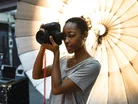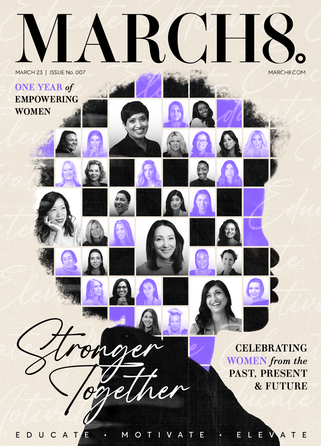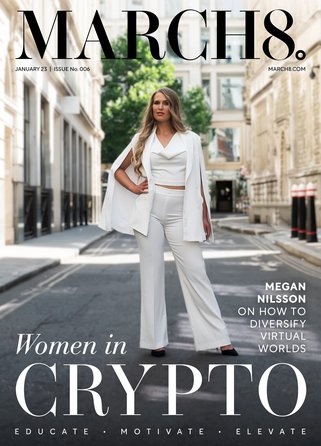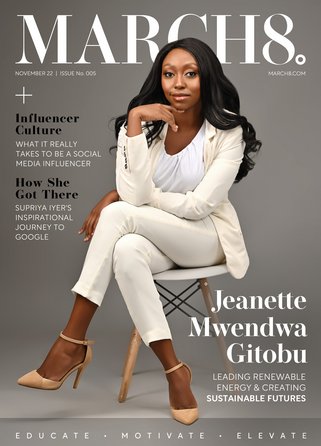Why women are underrepresented in the photography industry

Women have always been active in the photography industry, from the very beginning, but their names have gone unnoticed and uncredited for just as long. Many decades later, and we’re still seeing a lack of female representation in this industry, with gender bias and inequality still very much a part of this creative sector.
There’s certainly no shortage of photographers in various genres, but women are still underrepresented and underpaid, in large part because they lack the online visibility that encourages others to join the sector.
According to the US Bureau of Labor Statistics, women account for half of all working photographers but this doesn’t translate into the same level of opportunities or visibility on digital platforms. They’re far less likely to be recognised for their work, credited or celebrated compared to men, especially for ethnic minorities who suffer from even less representation.
Not only do female photographers earn less than their male counterparts but the opportunities offered to them are fewer and further between. So why is it that we’re still seeing an imbalance between genders in the photography industry and what can be done to resolve the issue?
Inequalities in ambassadorships
Major brands like Canon, Nikon and Sony have all been called out for their unbalanced ambassadorship opportunities. As a platform to celebrate and showcase talent, prioritising men only widens the gender gap, yet these brands have still been rightly criticized for their lack of awareness when it comes to offering opportunities.
For example, in recent years, Canon has come under fire for an all-male ambassador lineup in the Philippines, while the US nominated just 12 female photographers out of 38 vacancies. In Europe, just 14 women were nominated out of a possible 109 placements. Opening up ambassadorship programmes to include people of all ages, backgrounds and genders levels the playing field and increases representation for all, not just a select few.
Fewer role models and diverse representation
The industry isn’t short of photographers from different backgrounds, ethnicities and religions, but so few of them are represented that it becomes easy to see why the general public assumes they’re not a part of the sector. It’s something that was of immense importance to the 2021 Female in Focus winner Jodie Bateman who won the prize with her series My Hijab Has a Voice: Revisited.
In an interview with MPB, Bateman explains that the series was inspired by a lack of representation and negative stereotypes: “I don’t see women dressed like me being represented. And when they are, it’s always in a negative manner and they never give space for a Muslim woman to speak up for herself or share her opinions on what she wears. With my series, I would just hope to put more representation of this dress out there for younger Muslim women to see as well and be proud of it”. Enabling women to see themselves represented not just in images but in the industry as a whole encourages more young women to take part, rather than excluding them and making them feel like a career in this sector isn’t possible for someone who looks like them.
A lack of online visibility
When searching for top professional photographers, research from Wallflower Studios found that search results for terms such as ‘Best photography Instagram accounts’ and ‘Best photographers’ features 216 photographers on the first page of results, only 61 of which were women in the US and just 46 for UK results. For the US, women were represented 28% of the time; in the UK, the results were even lower at 17%.
This results in an unfair perspective, leading people to assume that women don’t play a role in this line of work or that they only shoot a certain type of feminine, romantic image which isn’t the case.
Unconscious biases
There’s implicit bias in so many industries, and photography is no exception. Unconscious biases based on social stereotypes, whether that’s regarding age, religion, race, sex or gender, result in wrongful perceptions and they can be a huge barrier in holding women back from success.
For example, women are often balancing home life and childcare with their job far more than men are, meaning they can’t take on as many projects or clients. Similarly, women are often overshadowed and conditioned not to speak up as much, so their opinions aren’t heard. This puts their creativity and expertise on the back burner, in favour of male perspectives.
The value of female representation in photography
The industry owes so much of its creativity, growth and early adoption to women, with trailblazers such as Anna Atkins and Julia Margaret Cameron leading the way for other photographers to build successful careers. But there’s negative stereotyping and gendered language still present in ads and social media posts that dissuade women from picking up a camera and getting involved, which only furthers the divide and prevents women from joining this male-dominated industry.
There’s been a complete reversal of gender profiles of students studying photography in the last few decades, but the number of women in the industry still hasn’t changed. Women make up less than a quarter of all professional photographers, despite up to 80% of graduates being women. The obstacles that women face in getting jobs and being paid the same as male photographers discourage women from entering the field and make it harder for them to succeed. What’s more, institutionalised misogyny and a lack of opportunities for photographers of colour make it hard for anyone other than men to tell their stories.
Creating ambassadors in an industry that is underrepresented is especially important when it helps to close any gender divide. Therefore, highlighting the success of female entrepreneurs as well as promoting role models and the value of inspirational mentors can all have a positive impact on women.
In order to include more women in photography, the industry needs to do more than simply provide better access (though this is obviously a necessary starting point). People experience the world differently based on their backgrounds, lifestyles and more, and women have so much to offer in terms of presenting a different perspective.
Up until now, what we’ve largely seen from the photography industry has been from the male standpoint. But to produce authentic work, the industry has to become more diverse and reflect all communities. While there are glimmers of hope in terms of change, there are still fundamental problems that need to be addressed.
Featured Articles
B Corporation certification has long been hailed as the gold standard of sustainability – we explore why
How does a retail investor replicate, as closely as possible, a venture capital investment strategy? Paula Tavangar of SwissBorg Ventures explores
Michelle Li shares how parents can ensure their children are taking the right steps to a more sustainable future



